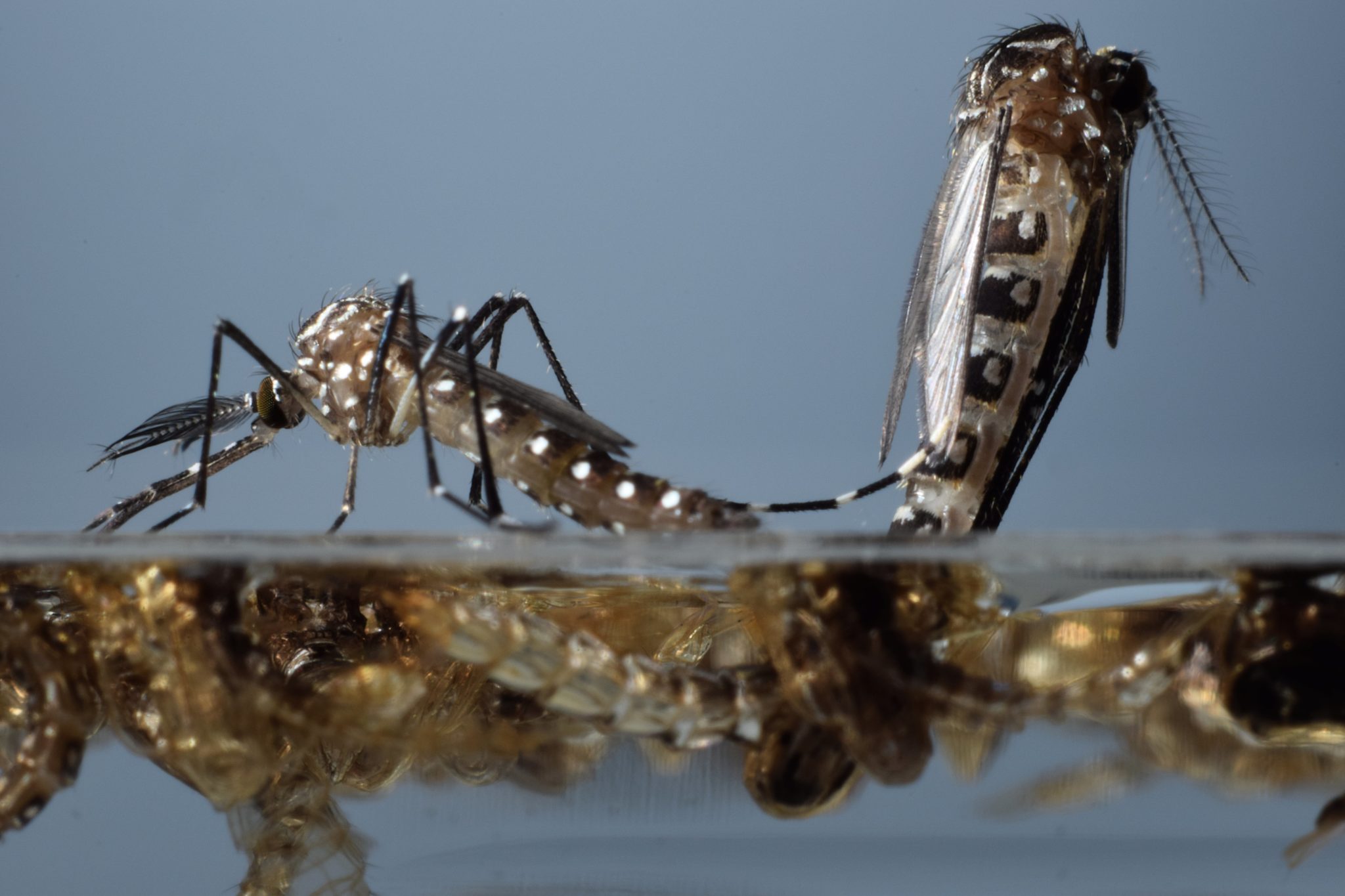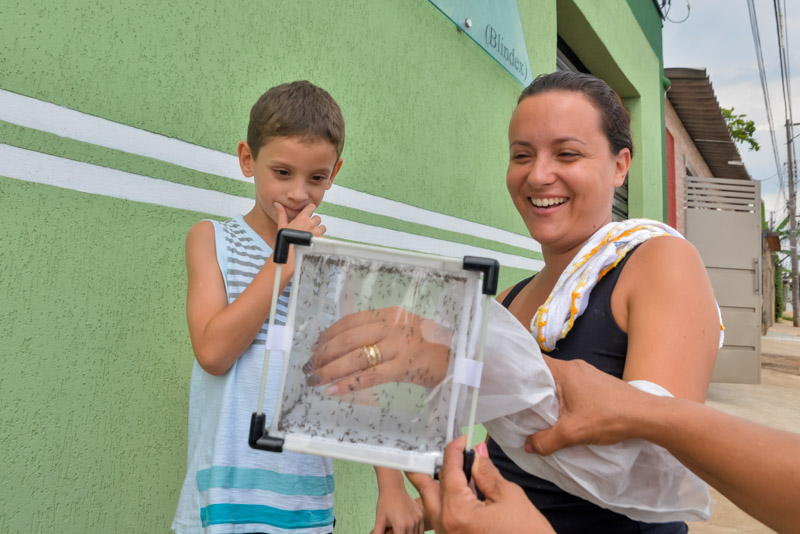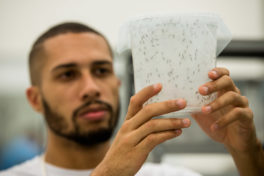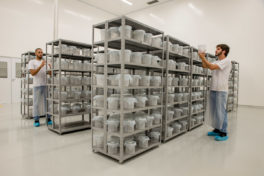- by Alison
Oxitec’s ‘friendly mosquitoes’ now protect thousands from dengue

Photo courtesy of Oxitec
‘Friendly Mosquitoes’ from Oxitec are now protecting more than 60,000 people from the ‘dengue mosquito‘. The genetically modified male Aedes aegypti mate with wild females, passing a self-limiting gene on to offspring. The youngsters die before they reach maturity and before they’re able to spread the dengue virus.
It’s just over a year since we last spoke to Oxitec. At that time, its mosquito control solution was moving from field trials to operational use in Piracicaba, Brazil, having suppressed more than 90% of the wild Aedes aegypti population in several trials. Since then, the company has been focusing on commercializing and expanding projects with its technology.
We spoke to Oxitec’s CEO Hadyn Parry, who began by telling us why Oxitec’s mosquito control solution is affectionately known as Friendly™ Aedes: “We take some of our mosquitoes when we visit communities and ask people to put their hand in the cage.
The press in Brazil and Panama began to call it the friendly mosquito because, being males, they don’t bite. They’re friendly!”

Oxitec mosquitoes: trials to operations
Oxitec began rolling out its technology on an operational basis last July, within the São Judas district of Piracicaba and the Cayman Islands. It then began to release further Friendly™ Aedes in ten additional downtown neighborhoods of Piracicaba during August and September.
With scale-up, Oxitec needed to make sure its technology could produce large numbers of healthy mosquitoes cost-effectively. To do that, biological engineers adapted equipment within Oxitec’s breeding facilities and quality processes were stepped up.
“Quality control is vital for scaling our operations,” states Parry. “We need to ensure the large numbers of insects we breed in our mosquito factories are fit and strong.”

Photo courtesy of Oxitec
The operational solution also needed a tool to automatically calculate exactly where and how many mosquitoes should be released. “You may have high mosquito population levels in one area of town and low population in another,” explains Parry. “You need a monitoring system that will allow you to release the right number of mosquitoes.”
The system is both precise and easy to use, so it can be shared with any customers wanting their own mosquito factories.
Factories across the globe
Currently only Oxitec has mosquito factories: a large factory in Piracicaba; a small factory in the Cayman Islands; factories in Florida and India that will breed mosquitoes for trials; and a development factory in the UK where new cages and rearing systems are developed, and eggs are produced in the factory in the Cayman Islands.

Photo courtesy of Oxitec
“In our next phase, we’re going to be ramping up production in our large factory in Brazil, which has the capacity to produce 60 million mosquitoes per week,” says Parry. A weekly output of 60 million mosquitoes could protect anything from around 300,000 people in a region with poor mosquito control.
Once you have significantly reduced the population of wild mosquitoes, the only female mosquitoes around are those arriving on buses and boats. You then only need to do a very low-level release across the area, meaning 60 million mosquitoes could protect up to two million people – or even three million within an integrated vector control program.
“Within a physically separated island you might be able to actually eliminate mosquitoes altogether,” ponders Parry. “You’d only need to release genetically engineered mosquitoes around airports or marinas to control mosquitoes returning by boat or plane since Aedes mosquitoes can’t fly very far.”
Next stop: India and the USA
Oxitec is currently running early stage regulatory trials in Florida and Dawalwadi in India. In Florida, a referendum saw 31 out of 33 districts voting in support of the trial. In India, a second mosquito factory is being built so that breeding can be quickly scaled up once Oxitec gains regulatory approval.
“Our technology needs to gain regulatory approval in every country where it is deployed,” says Parry. “Each country has its own process: some ask for data from earlier trials then give permission for trials; others allow small trials, then bigger trials before if all is well, we gain regulatory approval to commercialize it.”
With a pipeline of countries looking to trial the friendly mosquitoes, Oxitec must manage its resources carefully, as Parry explains: “We have to balance between how many people we have and how much we can do at any one time. Demands on resources also depend on countries’ regulatory systems and what we need to do to bring the product to them.”
Battling Zika together
Parry agrees that Friendly™ Aedes could be deployed as part of an integrated vector control program alongside other interventions such as insecticides or potentially Wolbachia mosquitos [insert link] in the fight against Zika and chikungunya as well as dengue: “You could, in theory, combine the technologies one day if both solutions pan out: using Oxitec’s Friendly™ Aedes to bring down the wild population and then the Wolbachia mosquitoes to rebuild it.”
Both solutions are already proving to be key weapons in the fight against Zika. Last March, the World Health Organization (WHO) recommended “carefully planned pilot deployment under operational conditions accompanied by rigorous independent monitoring and evaluation.”
Tell us about the novel solutions that you’ve experienced as your community battles dengue.
—
Click below to report dengue activity in your area using Dengue Track.

